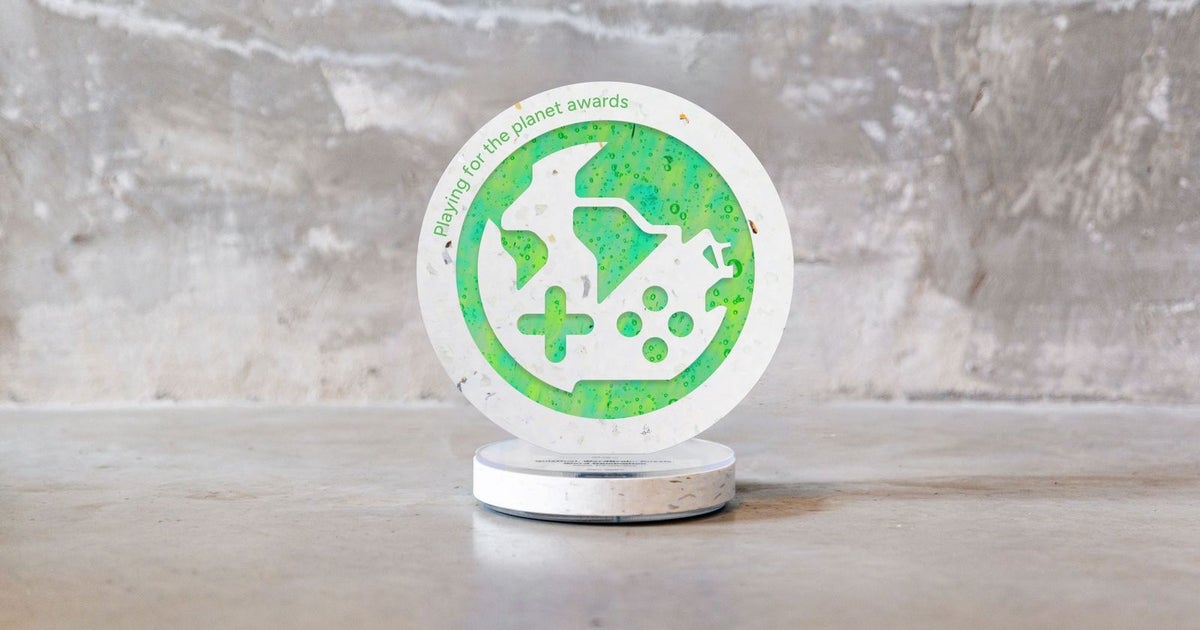For three years now, I feel like I’ve been writing the same story about the Green Game Jam: great efforts are being made but where are the companies making blockbuster games? Why aren’t they part of this, and what will it take to get them involved?
It’s frustrating because the potential for impact is there, as witnessed in the few blockbuster games that have been involved. In 2022, the first year I was a judge in the Media’s Choice category, Sony ran a plant-a-tree campaign for Horizon: Forbidden West that fit the brief perfectly and resulted in trees being planted in real life. That same year, Ubisoft set a Riders Republic map ablaze to raise awareness about the devastation of wildfires – a dramatic event players couldn’t help but be drawn in by. This year, PUBG Mobile did something similar of its own, transforming a verdant map – with the help of an expert climatologist – into a dried and withered husk, representing what it would look like as a result of climate change. Imagination, reach, impact: these examples had them all.
But entries like the above are few and far between. In fact, those games are perhaps the only times triple-A, or even double-A games, have featured in the Green Game Jam. Most entries come from games in the social, casual, and mobile gaming space – all of which are huge and impactful in their own right. But when it comes to reaching the more traditional gaming public – the likes of you and me, for example – there’s no denying a household publisher could bring more clout to the whole endeavour. It’s telling that this year’s PUBG entry was for PUBG mobile only; what I wouldn’t have given to see it realised in PUBG on PC too. More worryingly still, there’s a slightly backwards trend of fewer triple-A entries appearing than in previous years; I don’t think I saw a triple-A anywhere on the nominations list this year at all. What gives – do triple-A game makers just not care?
The answer is complicated, as I discovered while speaking to Sam Barratt, one of the leaders of the Playing for the Planet Alliance, which organises the Green Game Jam. Playing for the Planet, in case you didn’t know, is a United Nations initiative that aims to bring games companies together to help them to make meaningful changes to the environmental impact of their work and operations. It was launched in 2019, and more recently, you may have seen project director Lisa Pak on stage during a brief segment in this year’s Gamescom Opening Night Live show.
But back to the answer: the complication comes not from a desire to take part, but from the Green Game Jam itself. We’re a round shaped hole that a square peg doesn’t quite fit in,” Barratt admits, talking to me in a video call. Triple-A games are typically much bigger projects with slower turning circles and longer development lead-times, which makes it hard to mobilise in time to take part. The organisers tried lengthening the entry period, but that didn’t work either.
The double-problem with this is Playing for the Planet knows there are companies out there doing things that absolutely fall within the remit of the environment-related work it would like to celebrate. “Rare is doing some remarkable things that we know about,” Barratt says, “Ubisoft’s got other ideas that we know about. Sony has got two or three things that they’re planning that just don’t sit in the Jam framework. So it’s happening but it’s not able to happen inside the Jam rubric – that’s what’s going on.”
The question then becomes: how do you fit them in – how do you recognise their efforts? Simple: you change the awards.
Cue the inaugural Playing for the Planet Awards, which took place this week in Helsinki, Finland. This might sound like the Green Game Jam, but in the name-change lies a significant difference: it’s no longer confined to games making content specifically for the Green Game Jam – the scope is wider. It allows the organisers to celebrate games that aren’t in the Green Game Jam but are making exceptional efforts in this area – I’ll never forget talking to Terra Nil developer Free Lives, a strategy game about rewilding environments, and being told it had never heard of the Green Game Jam, for example. It can also celebrate people making exceptional individual contributions – efforts that the Green Game Jam couldn’t recognise before.
Just look at this list of winners from the inaugural Playing for the Planet Awards, which features names like For Honor and Minecraft – those are the kinds of names we want to see.
- Best Purpose-Driven Game – Longleaf Valley by TreesPlease Games
- Best Green Activation – Minecraft: Urban Miner by Mojang Studios
- Best Green Tech – For Honor by Ubisoft
- Changemaker – Mojang Studios
- Champion – Jennifer Estaris & Jude Ower
- UNEP’s Choice – Dragon Mania Legends by Gameloft
- Call to Action – Love & Pies by Trailmix Games
- Media’s Choice – PUBG Mobile by the Lightspeed Studios of Tencent Games & Krafton
- Trailblazer – Love & Pies by Trailmix Games
- Newcomer – FarmVille 3 by Zynga
- Player’s Choice – Hay Day by Supercell
- Jam Spirit – June’s Journey by Wooga
One award that particularly catches my eye is “Best Green Tech”, which is an area of significantly increased importance recently. You might remember an investigation I co-wrote on Eurogamer about how green game downloads are, and how a part of it mentioned the importance of talking about efficiency in games, not just in the sense of more power, but efficiency that runs through hardware right down to a game’s code. That’s what Best Green Tech is about.
It’s as Sam Barratt says: “Those that make and power the games really have all the agency to make things easier for people further downstream. So the more that Nvidia is conscious, the more that the engines like Unreal and Unity are conscious, the more that the platforms are conscious, the easier it is for the rest of the ecosystem to do the right thing.”
These new awards, then, are a way to include the industry more widely and to keep people thinking about the issues year round, to “shift it from being a seasonal event where people think they need to do something and just tick the box, to an always-on mindset, where people are thinking about what contribution they can make,” Barratt says.
I’m relieved. I admire what Playing for the Planet is trying to do, and it’s a relief to hear triple-A games companies aren’t ignoring it, they’re just doing things slightly differently, their way. It’s enormously encouraging to hear that companies like Rare and Sony and Ubisoft are busy cooking things up in this area – I can’t wait to see what they are. It only takes one leader to inspire a change.
In five years, Playing for the Planet has announced itself, established itself, and made the Green Game Jam something of a known quantity. This feels like the next step. It’ll be a harder one to gauge the impact of, I suspect, given that it won’t be contained within the Green Game Jam (or at least not entirely). But then, it’s never been about fame or prestige – it’s always been about bringing companies together towards a greater goal: to inspire action before it’s too late. That, I applaud.
fbq('init', '560747571485047');
fbq('track', 'PageView'); window.facebookPixelsDone = true;
window.dispatchEvent(new Event('BrockmanFacebookPixelsEnabled')); }
window.addEventListener('BrockmanTargetingCookiesAllowed', appendFacebookPixels);












Leave a Reply